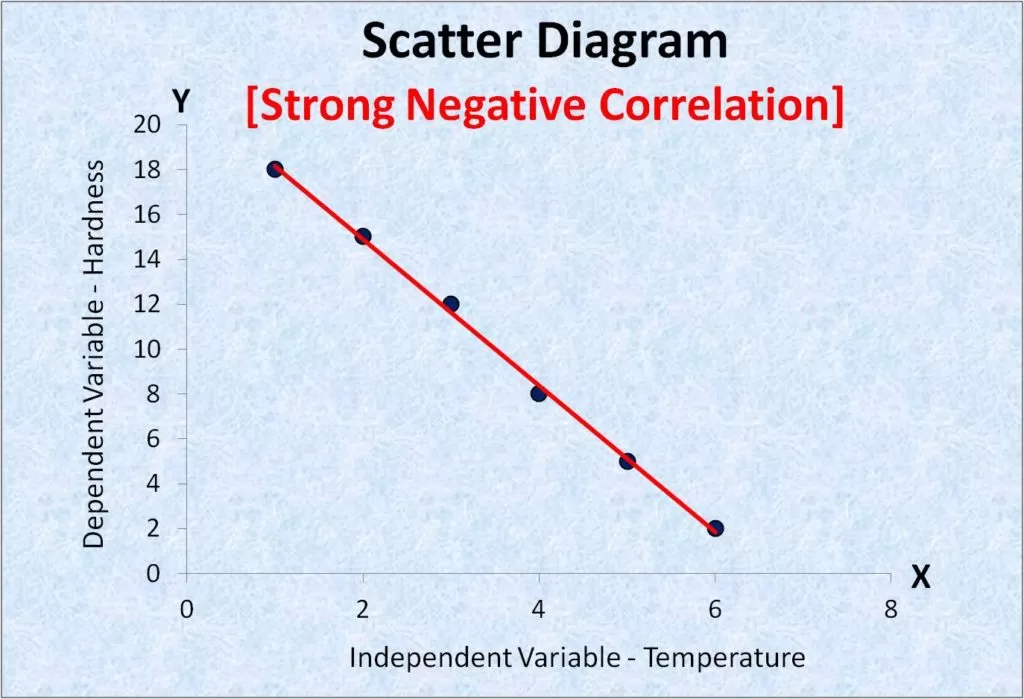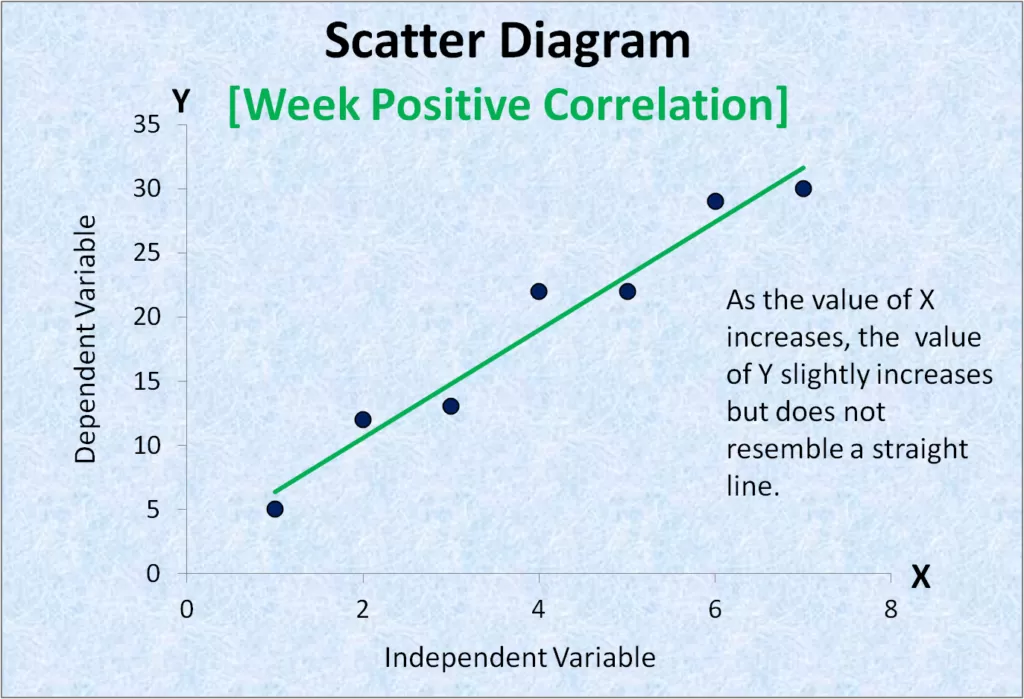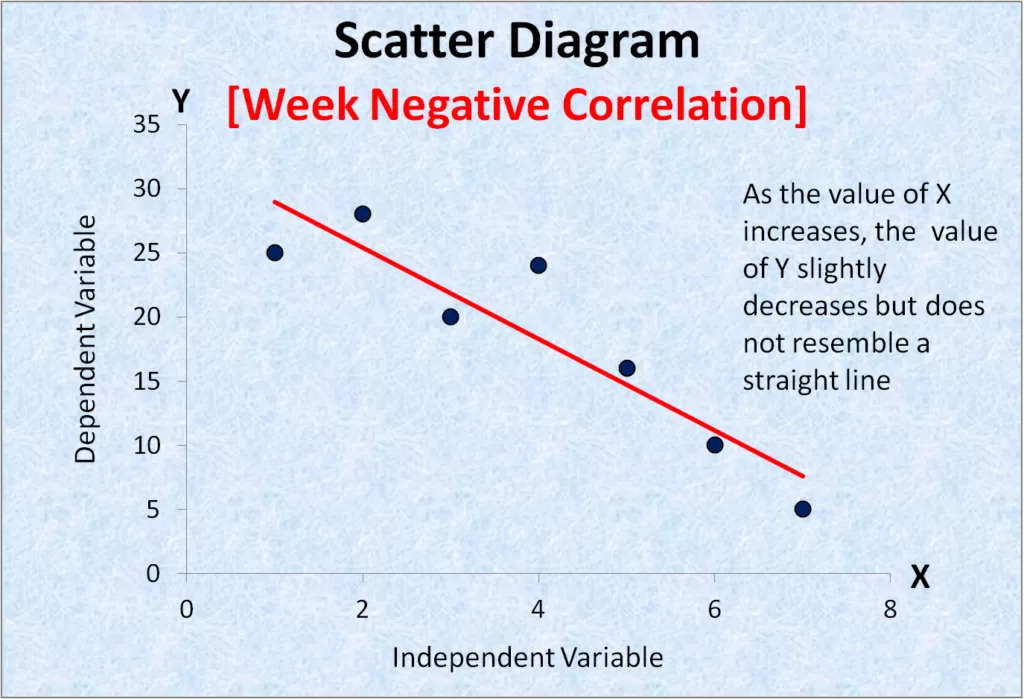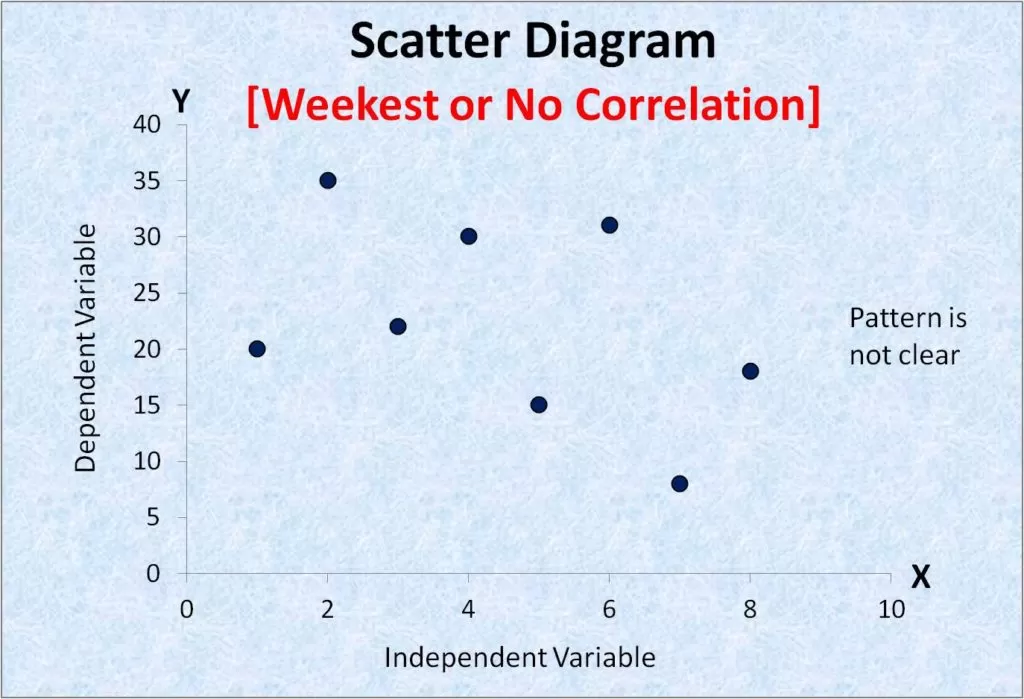Scatter Diagram is also known as Correlation Chart, Scatter Plot, Scatter Chart, and Scatter Graph.
Scatter Graph is used to find out the relationship between the two variables.
Independent variable data and dependent variable data are customarily plotted along the horizontal X-axis and Vertical Y-axis respectively.
Independent variable is also called as controlled parameters.
It shows a Positive or Negative correlation between two variables.
If the plotted points are distributed from the lower-left corner to the upper right corner, then it is a positive correlation.
If the plotted points are distributed from upper left to lower right, then it is a negative correlation.
This Correlation Chart is widely used in 7 QC Tools and Six Sigma methodology.
A Scatter Graph is seen like a Fishbone diagram because the fatter has two parameters as Cause and Effect. However, these two are totally different.
The fishbone diagram is used to examine the cause and effect relationship, but it does not show you the relationship between these two. Whereas, scatter graph helps to analyze the relationship between the two variables.
Table of Contents
SCATTER DIAGRAM DEFINITION
It is a visual & statistical testing quality tool that is used to find out the relationships between two variables.
WHEN TO USE
- Used in problem-solving to establish a root cause.
- Examine root cause theories in Cause & Effect.
SCATTER GRAPH – PURPOSE/BENEFITS
- To analyzes strength & find out the relationship between two variables.
- Provides the data to confirm a hypothesis that two variables are related
- For Better process management in the variable analysis.
- Establish a relationship between two sets of numerical data.
- To track trends & patterns of different measures.
SCATTER DIAGRAM EXAMPLES | CORRELATION | TYPES
According to correlation pattern, the Scatter chart is divided into main five categories
- Scatter chart with Strong or High Positive Correlation.
- Scatter chart with Strong or High Negative Correlation.
- Scatter chart with Week or Low Positive Correlation.
- Scatter chart with Week or Low Negative Correlation.
- Scatter chart with Weakest or No Correlation.
1. Scatter diagram with Strong or High Positive Correlation:
As the X value increases, the Y value also increases.
Example: Motorcycle Speed Vs Accident.
In the below diagram, the independent variable is speed and the dependent variable is an accident. As the speed of the motorcycle increases on the highway, the accident rate also increases accordingly.

2. Scatter diagram with Strong or High Negative Correlation :

3. Scatter diagram with Week or Low Positive Correlation :

4. Scatter diagram with Week or Low Negative Correlation :

5. Scatter diagram with Weakest or No Correlation :

See also
- Stratification Meaning | Stratification Definitions | Benefits with Examples
- What is Pareto Chart? A Basic Quality Tool of Problem Solving.
- What is Histogram? Types, Use, Benefits and Interpretations with example.
